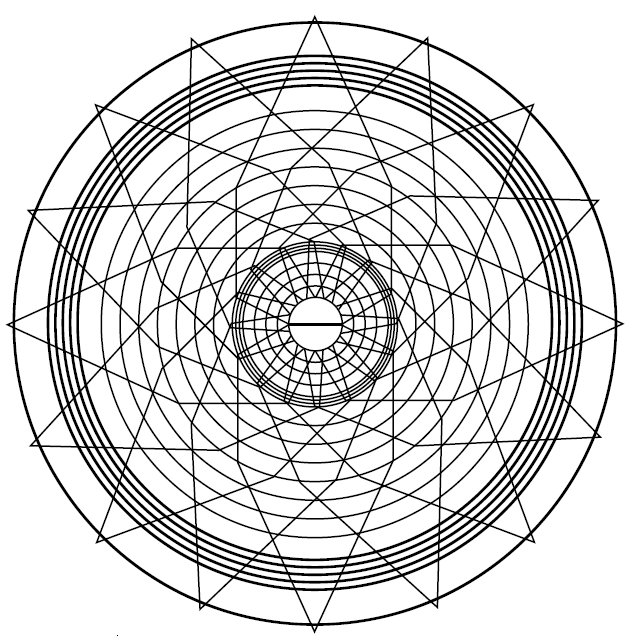McLuhan in the Digital Marketplace: Media Effects of Online Shopping
Abstract
The digital marketplace functions as a medium that privileges nomos over phusis by reducing online shoppers to discarnate human beings and transforming goods and services into information. This interpretive article addresses how Marshall McLuhan’s approach to media ecology invites further analyses about the media effects of the digital marketplace. First, McLuhan’s media ecology is articulated to offer a theoretical frame for this article. Second, a brief summation of the Nomos-Phusis Debate announces how human beings use language to differentiate ideas from physical things. I suggest that McLuhan’s approach to media ecology contributes to the Nomos-Phusis Debate. Third, media effects on the human sensory experience from the ancient marketplace and contemporary brick-and-mortar stores are distinguished from the messages and massages of the digital marketplace. McLuhan’s media ecology challenges consumers to consider the effects of the digital marketplace as a medium, including unintended negative consequences, rather than just focusing on the digital marketplace’s positive messages.
Downloads
References
Acker, C. (2017). How does shopping affect your health? Lola. Retrieved from https://www. mylola.com/blog/how-does-shopping-affect-your-health/
Anton, C. (2012). McLuhan, formal cause, and the future of technological mediation. The Review of Communication, 12 (4), 276-289.
Aristotle. (1984). Politics. In The complete works of Aristotle: The revised Oxford translation, vol. 2., (B. Jowett, Trans.). (pp. 1986-2129). Princeton, NJ: Princeton University Press.
Aristotle. (1999). Nicomachean ethics (2nd ed.). (T. Irwin, Trans.). Indianapolis, IN: Hackett Publishing Company, Inc.
Ashley, B.M. (2006). The way toward wisdom: An interdisciplinary and intercultural introduction to metaphysics. Notre Dame, IN: University of Notre Dame Press.
Burke, K. (1969). A Grammar of Motives. Berkeley, CA: University of California Press.
Crosby, H.L., and Schaeffer, J.N. (2007). An introduction to Greek: Greek-English vocabulary. Wauconda: Bolchazy-Carducci Publishers, 1-32.
The definition of digital marketing (n.d.) In Financial Times. Retrieved from http://lexicon.ft. com/Term?term=digital-marketing
Debroff, S. (2017). Seven surprising ways online reviews have transformed the path to purchase. Business.com. Retrieved from https://www.business.com/articles/7-surprising-ways-online-reviews-have-transformed-the-path-to-purchase/.
Elkins, K. (2017). Here’s how much the average US family has in credit card debt. CNBC: Money. Retrieved from https://www.cnbc.com/2017/05/17/how-much-the-average-us-family-has-in-credit-card-debt.html.
Finley, M.I. (1999). The ancient economy. Berkeley, CA: University of California Press.
Gilchrist, B. (2017). Papal media ecology: Laudato Si’ as a medium of technocratic resistance. The Journal of Communication and Religion, 40 (1), 56-75.
Gronbeck, B.E. (2007). The media ecology tradition of communication studies: Managing legacies, codifying theoretical-critical practice. The Review of Communication, 7 (2), 180-185.
Haynes, W.L. (2004). Original Sin or saving grace? Speech in media ecology. The Review of Communication, 4 (3-4), 227-247.
Heidegger, M. (1968). What is Called Thinking? (J. G. Gray, Trans.). New York: Harper & Row, Publishers Inc.
Heilbroner, R. (1997). Teachings from the worldly philosophy. New York, NY & London, England: W.W. Norton & Company.
Lambert, T. (2013). McLuhan’s most innovative book: The medium is the massage: An inventory of effects. McLuhan Galaxy. Retrieved from https://mcluhangalaxy.wordpress.com/2013/12/28/mcluhans-most-innovative-book-the-medium-is-the-massage-an-inventory-of-effects1967/
Lanigan, R.L. (1982). Semiotic phenomenology: A theory of human communication praxis. Journal of Applied Communication Research, 10 (1), 62-73.
Lanigan, R.L. (1994). Capta versus data: Method and evidence in communicology. Human Studies, 17, 109-130.
Lewis, P. (2017). ‘Our minds can be hijacked’: The tech insiders who fear a smartphone dystopia’ The Guardian. Retrieved from https://www.theguardian.com/technology/2017/ oct/05/smartphone-addiction-silicon-valley-dystopia
Lord, C. (1987). Aristotle. In History of political philosophy (3rd ed.). L. Strauss & J. Cropsey. (Eds.). (pp. 118-154). Chicago, IL & London, England: The University of Chicago Press.
Marchand, P. (1998). Marshall McLuhan: The medium and the messenger: A biography. Cambridge, MA: The MIT Press.
McKirahan, P. (1998). Philosophy before Socrates: An introduction with texts and commentary (2nd ed.). Indianapolis, IN and Cambridge, MA: Hackett Publishing Company.
McLuhan, M., & Fiore, Q. (1996). The medium is the massage: An inventory of effects. Berkeley, CA: Gingko Press.
McLuhan, M. (2003). The medium and the light: Reflections on religion. E. McLuhan and J. Szklarek (Eds.). Eugene, OR: Wipf & Stock.
McLuhan, M. (2003). Understanding media: The extensions of man. Berkeley, CA: Gingko Press.
McLuhan, M. (2006). The classical trivium: The place of Thomas Nashe in the learning of his time. Berkeley, CA: Gingko Press.
Meikle, S. (1995). Aristotle’s economic thought. Oxford, England: Oxford Press.
Metaphor (2017). In Merriam-Webster Dictionary. Retrieved from https://www.merriam-webster.com/dictionary/metaphor
Ong, W.F. (2002). Orality and literacy: The technologizing of the word. London, England and New York, NY: Routledge.
Pinkard, T. (2000). Hegel: A biography. Cambridge, England: Cambridge University Press.
Postman, N. (1970). The reformed English curriculum. In High School 1980: The shape of the future in American secondary education. A.C. Eurich (Ed.). (pp. 160-168). New York, NY: Pitman.
Postman, N. (1992). Technopoly: The surrender of culture to technology. New York, NY: Vintage Books.
Ross, M.R. (2009). Postman, media ecology, and education: From Teaching as a Subversive Activity through Amusing Ourselves to Death to Technopoly. The Review of Communication, 9 (2), 146-156.
Safranski, R. (1998). Heidegger: Between good and evil. (E. Osers, Trans.). Cambridge, MA and London, England: Harvard University Press.
Sanburn, J. (2017). Why the death of malls is about more than shopping. Time. Retrieved from http://time.com/4865957/death-and-life-shopping-mall/.
Schiavocampo, M., Pou, J., and Valiente, A. (2015). This is what your brain looks like on a shopping spree. ABC News. Retrieved from http://abcnews.go.com/Lifestyle/brain-shopping-spree/story?id=30287441.
Sloan, C. Online shopping dangers: How e-retail affects women’s spending. Huffpost. Retrieved from https://www.huffingtonpost.com/2011/09/08/women-and-online-shopping_n_954719.html.
Solon, O. (2017). Google’s ad tracking is as creepy as Facebook’s. Here’s how to disable it. The Guardian. Retrieved from https://www.theguardian.com/technology/2016/oct/21/how-to-disable-google-ad-tracking-gmail-youtube-browser-history
Thaler, P. (2006). The legacy of Neil Postman, and the coming of age of media ecology. The Review of Communication, 6 (4), 369-373.
Twenge, J.M. (2017). iGen: Why today’s super-connected kids are growing up less rebellious, more tolerant, less happy—and completely unprepared for adulthood. New York, NY: Atria Books.
Wachs, A.M. (2015). The new science of communication: Reconsidering McLuhan’s message for our modern moment. Pittsburgh, PA: Duquesne University Press.
Weinschenk, S. (2015). Shopping, dopamine, and anticipation. Psychology Today. Retrieved from https://www.psychologytoday.com/blog/brain-wise/201510/shopping-dopamine-and-anticipation.
White, T.L. (2009). A second look at the structure of human olfactory memory. Annals of the New York Academy of Sciences, 1770, 338-342.

